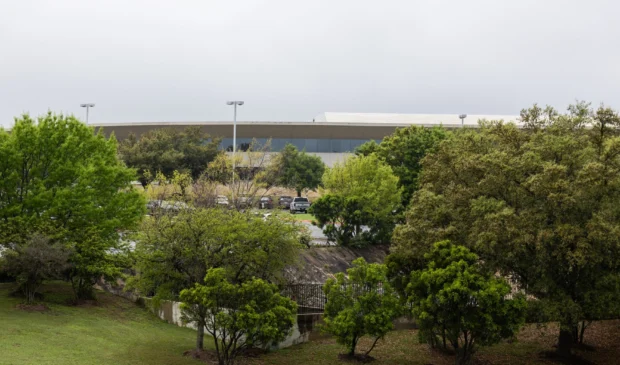City Council voted Thursday to spend $87 million to buy 107 acres of land in Southeast Austin for affordable housing.
Tokyo Electron, which makes semiconductors and display production equipment, announced in February that it was moving from the site. The city plans to build 1,100 units – some of which will be affordable – on the property. It sits near a future light-rail line.
Council Member José Velásquez, who represents the area, said the project will allow the city to prioritize housing needs for “hard-working residents.”
“This is the first major step in a project that has the potential to be transformational,” Velásquez said. “One of my goals is to provide more affordable housing and deeply affordable housing to District 3. The opportunity to do so in this location, built intentionally and strategically with public transit access, is beyond exciting.”
In his newsletter Monday, Mayor Kirk Watson said he envisions something similar to the Mueller neighborhood. He said the city learned some lessons from that development, however, and will make sure there is enough dedicated affordable housing to meet the demand and public transportation options.
Watson said he also hopes the site includes workforce housing – affordable to those with lower incomes, such as firefighters, teachers, health care professionals and service workers.
In 2017, the city set a goal to build 60,000 affordable housing units. Another 75,000 were to be rented at market-rate. But the city is behind on those goals, and Watson said he hopes this development can help chip away at that number.
“The vision is for a dense, transit-oriented neighborhood that could conservatively accommodate 1,100 living units,” he said. “The potential here is great.”
The city is using $27 million from a $300 million anti-displacement fund voters approved in 2020 as part of the transit expansion known as Project Connect. The fund is intended to help prevent people who live near future public transit from being priced out of their homes.
By the end of February, the city had already allocated $120 million of the anti-displacement funds, according to city data.
Using this money allows the city’s housing department to develop additional income-restricted units close to transit and other community amenities, like parks.
The remaining $60 million for the property will be funded through bonds backed by property tax revenue, according to city officials.
Two buildings on the site – totaling roughly 190,000 square feet – will be converted as a second location for the area’s Combined Transportation and Emergency Communication Center, which coordinates emergency response.
According to a news release, the city will also gain about 66 undeveloped acres near the Austin Energy Control Center at 2500 Montopolis Drive. This land, combined with the current 18-plus acres at the southeast corner of Grove and Riverside already held by the Austin Housing Finance Corp., will provide substantial opportunities for additional affordable housing, Assistant City Manager Veronica Briseño said.
Monica Guzman with Go Austin/Vamos Austin, a coalition of East Austin residents and community leaders, questioned whether the units would actually be affordable for many Austinites in the workforce.
Velásquez said the purchase is the first step.
“One of the greatest aspects of this acquisition is that we are drivers,” he said. “And with intentionality, discipline, thoughtfulness and a focus on accessibility and inclusion, we can leverage this opportunity into creating a vibrant, affordable, transit-friendly community that sustainably serves the needs of many and works to mitigate the impacts of displacement.”
This story was produced as part of the Austin Monitor’s reporting partnership with KUT.
The Austin Monitor’s work is made possible by donations from the community. Though our reporting covers donors from time to time, we are careful to keep business and editorial efforts separate while maintaining transparency. A complete list of donors is available here, and our code of ethics is explained here.








